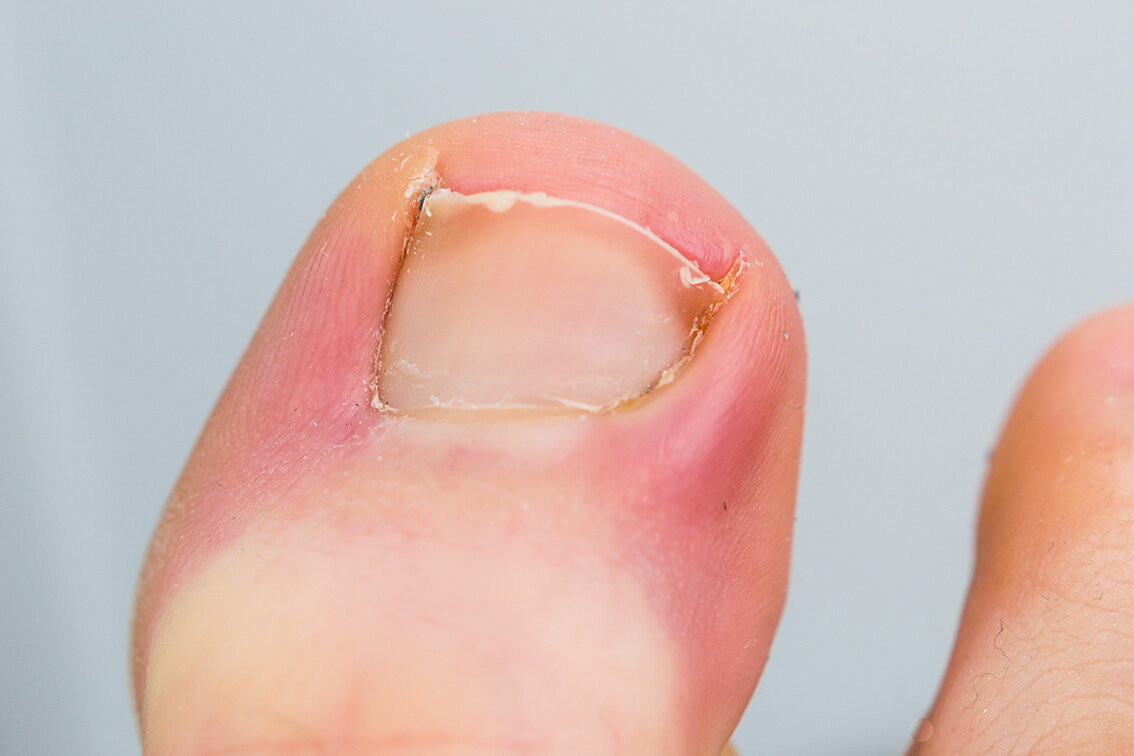Ingrown Toenail Surgery
Ingrown toenails can quickly become more serious as pain and symptoms get worse. For diabetics and older people, there can be a serious risk of tissue death and bone infection if ingrown toenails are not properly addressed.
In most cases, we will perform ingrown toenail surgery in our practice without the need to visit hospital. For more severe infections or high-risk cases, an in-hospital procedure may be recommended.
What are ingrown toenails?
Ingrown toenails occur when the edges of the toenail grow into the skin of the toe itself. They can be caused by many factors, including minor things like cutting your toenails incorrectly, wearing tight shoes or stockings that put pressure on the big toes. A toenail injury, not cleaning or drying toes properly or having naturally curved toenails can also be a cause. Ingrown toenails can be more prevalent in older people with thicker toenails or people who have sweaty feet.
Do I need surgery for ingrown toenails?
Ingrown toenails can be painful and symptoms tend to get worse over time. The skin by the nail will initially become tender and painful, with occasional fluid build up. If infection occurs, bleeding, oozing pus and an overgrowth of skin around the toe can develop.
The risks are higher if you are diabetic, in a lot of pain or discomfort, or are elderly. To prevent the spread of infection, you may need to consider surgery for your ingrown toenail.
Podiatrists can often assist in trimming the nail to prevent the ingrowing. However, as the root of the nail bed is not treated, the nail regrows and the ingrowing occurs again. Definitive operation by a wedge excision with removal of the root of the nail cures the problem.
What is involved in ingrown toenail surgery?
Ingrown toenail surgery is generally a straightforward procedure. In most cases, we will perform toenail surgery in our practice. The technique used will depend on the severity of the ingrown area. Your surgeon will numb the area with local anaesthetic and use the surgical method most suited to your condition:
partial nail removal – removing the part of the nail that digs into the skin and the corner of flesh that your toenail grows from
total nail removal – removing your whole nail
nail bed ablation – removing part or all of your nail before a chemical is applied to the area of flesh that your toenail grows from
Why visit a surgeon for ingrown toenail surgery?
There are risks involved if ingrown toenails are left untreated. You may develop an ulcer or open sore that will not heal. Restricted blood flow to the affected area may cause tissue death. Bone infection is another serious complication. These risks are more serious for people with certain conditions like diabetes who are more likely to develop problems with their feet and will almost always require treatment by a specialist surgeon.
What is the recovery for toenail surgery?
The recovery for toenail surgery is usually straightforward. After the procedure your toe will be bandaged and you’ll need to keep your foot elevated. After 1-2 days rest and elevation, the bandage should be left alone and kept dry until the follow up visit. During the follow up visit, the bandage is then removed. During this time, you will need to wear uncovered footwear, such as slippers and thongs.
If you need surgery for an ingrown toenail, ask your GP for a referral to visit one of the surgeons at Sunnybank Surgical. In most cases, we will perform toenail surgery in our practice, without the need to visit hospital. Alternatively, you may choose to have your procedure at Sunnybank Private Hospital, Mater Private Hospital Redlands or Mater Private Hospital South Brisbane.

